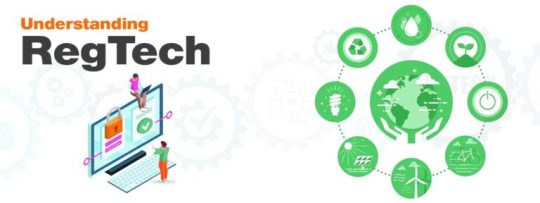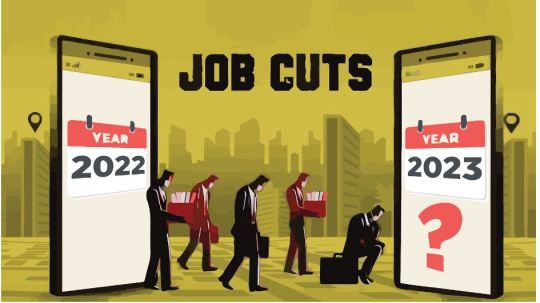Don't wanna be here? Send us removal request.
Text
Can FinTech Reach Rural Communities?

FinTech is one of the most trending financial ecosystems in India. Its market size is estimated to reach $150 billion by 2025. It has given a 180-degree turn to how Indian citizens and companies view their finances. But how far does this sustainable financial ecosystem reach the rural population? India’s rural population is almost 65% of the total population. Is this financial trend that is so technologically driven ready to be delivered and taught to the diverse landscape of India? The cornerstone of FinTech is making financial transactions sustainable and easier for the consumer and the seller. But how does this take place in a society where more than 50% of the population possibly lies on the lower spectrum of the digital divide? The truth is, that true economic growth cannot happen unless one uplifts the rural citizens of the nation.
FinTech is ready more than ever to tackle the rural landscape!
Rural India has previously faced numerous financial challenges in accessing traditional banking services. The geographical challenges and the lack of banking infrastructure led to millions feeling abandoned when it came to addressing one’s financial needs. Coupled with this was a lack of awareness about insurance, credit, and savings account services. But as the FinTech community rises to make financial management easier, it hasn’t forgotten the growing rural population of India. Step by step, FinTech has started to break down the barriers to financial inclusion in rural India.
Read full article
0 notes
Text
The Rise of Eco-Friendly Packaging: Trends and Innovations

With sustainability becoming increasingly fashionable, adaptable, and respectable each day, numerous businesses are reconsidering their packaging standards. From iconic brands to small businesses, everyone in pursuit of making their business customer-friendly has decided to let go of single-use plastic or excessive packaging. India alone produces 3.4 MT of plastic waste, of which only 30% is recycled.
Businesses are shifting towards eco-friendly packaging to mitigate these numbers and satisfy eco-conscious consumers. Traditional packaging methods that often include plastic or polystyrene are non-biodegradable and end up in landfills, where they take centuries to decompose and emit toxic gases. They can also end up in oceans or forest areas, hurting aquatic animals and wildlife. Plastic packaging gained traction in the 20th century as mass production was on the rise. Used for its durability and versatile characteristics, companies failed to foresee the negative impact it could have on the environment. Upon realization of this impact, there was a shift in corporate responsibility towards making businesses environmentally sound.
Today, eco-friendly packaging has achieved a higher reputation not only in the eyes of consumers but businesses as well. It redefined packaging reduced greenhouse emissions and proven to be biodegradable. Generally made from cardboard, styrofoam, or plant-based materials, it gave sustainable alternatives to the earlier harsh plastic. Companies, globally, are now embracing reusable, and recyclable materials to use in packaging to reduce their environmental impact. Eco-friendly packaging materials may require a larger initial investment than traditional packaging options, but in the long run, businesses can save money by reducing waste disposal costs, building brand loyalty, and opening up new markets. Future innovation and technology will lead to a rise in the sustainable trend. In particular, the development of sustainable packaging is greatly aided by the adoption of a circular economy. This type of economy serves as the cornerstone of a waste-reduction mindset and aims for the reuse and repurposing of goods and materials.
Read Full article
0 notes
Text
FinTech Solutions: The Rise of Automated Financial Advisors

A robo-advisor is a virtual interface that offers automated financial planning and investment services with minimal human involvement. These software solutions provide AI-generated responses that are tailored to suit the needs of people. The recommendations are based on the information acquired by these AI-powered tools, such as the client’s financial history, targeted investment goals, and personal risk preferences. Along with past user behavior, transaction histories allow a deeper understanding of the needs of the customers seeking support from these digital advisors
Apart from customer requests, these web-based robots can handle tax optimization and sentiment analysis, as well as ensure compliance with all the rules and regulations. Moreover, these virtual agents are equipped with educational tools that help the customers better understand the risks, advice, and related concepts. Such digital assistants drive customers away from emotional decision-making and help them overcome herd mentality.
Read More: What Is a Robo-Advisor?
Why Use Automated Insights for Empowering Finances?
Read full article
0 notes
Text
Prospects of Union Budget 2024-2025: A Detailed Guide

Central Finance Minister Nirmala Sitharaman presented the Union Budget for 2024-2025 in Parliament on July 23, 2024. This marks the first budget announced following the commencement of the government’s new term after this year’s elections.
The government has created a detailed roadmap for their pursuit of “Viksit Bharat,” by focusing majorly on four sections of society: farmers, women, youth, and low-income households. The finance minister discussed the significant themes of the annual budget: employment with a focus on developing the skill set of the job-seekers, along with an emphasis on the Ministry of Micro, Small & Medium Enterprises
Read full article:
0 notes
Text
Moonlighting in Modern India
The Dual Employment Dilemma

In the dynamic context of Indian employee-employer relations, “Moonlighting in India” has been successful in capturing the essence of a shifting work culture. Earlier, a single job was often enough to sustain an individual or even a family. However, as the world evolved, so did the nature of employment. The modern work environment, characterized by its fluidity and adaptability, has seen a significant rise in moonlighting. This phenomenon isn’t just about earning an extra rupee; it’s a reflection of the changing aspirations and capabilities of the workforce.
The term moonlighting, once associated with secretive night jobs, has now expanded to encompass a range of secondary employment opportunities. With the dawn of the digital age, geographical boundaries have blurred, enabling professionals to work for global clients from the comfort of their homes. This has been further pushed by the recent pandemic, which introduced the world to the potential of remote working on an unprecedented scale.
Furthermore, the evolution of work culture has played a pivotal role in this shift. The traditional 9-to-5 job is no longer the only viable employment model. Flexible employment options, freelance opportunities, and gig-based roles have gained prominence. For many, moonlighting is not just about financial necessity but also about pursuing passion projects, diversifying skills, or simply seeking new challenges.
What Does Moonlighting Mean in India

Moonlighting, at its core, refers to the practice of holding a secondary job in addition to one’s primary employment. The term finds its roots in the imagery of working under the moon’s light, often after regular working hours. Earlier, moonlighting was a means to make ends meet, especially during economic downturns or personal financial crises.
The concept of moonlighting is not new. In earlier times, individuals often took up additional tasks or roles to supplement their income. With the Industrial Revolution and the establishment of structured work hours, the term began to signify after-hours work. As economies evolved, so did the reasons for moonlighting. From mere survival, it transitioned to opportunities for skill enhancement, passion projects, and financial growth.
On a global scale, moonlighting has been prevalent in various forms. In developed nations, it often emerges from the desire to pursue varied interests or to achieve specific financial goals. The gig economy, characterized by short-term contracts and freelance work, has further fueled this trend. Platforms like Uber, Airbnb, and Upwork have made it easier for individuals to take up secondary roles that fit their schedules.
In contrast, the Indian context presents a unique blend of factors. While financial necessity remains a driving force for many, the IT boom and the rise of startups have introduced new dimensions to moonlighting in India. The recent surge in remote working opportunities has also played a role, allowing professionals to collaborate with global clients while maintaining their primary roles. However, cultural and corporate perceptions of moonlighting vary, leading to diverse practices and policies across companies.
The Legal and Ethical Implications of Moonlighting

Moonlighting, while prevalent, brings forth a wide range of legal and ethical considerations. From an employer’s perspective, the primary concern often revolves around potential conflicts of interest, confidentiality breaches, and divided employee loyalty.
Legally, the stance on moonlighting varies across jurisdictions. In India, there isn’t a comprehensive legal framework addressing moonlighting for all sectors. Specific industries, like the IT sector, fall outside the umbrella of traditional labour laws that might prohibit dual employment. Instead, the legalities are often governed by employment contracts.
Many companies explicitly mention moonlighting policies in their offer letters, prohibiting employees from taking up secondary employment. Such clauses aim to protect business interests, and intellectual property, and ensure undivided attention to the primary job. This is especially crucial in sectors like fintech where proprietary technology and data are at stake.
However, the enforceability of no-moonlighting clauses can be complex. While companies can set terms of employment, they must also ensure that these terms are fair and not overly restrictive. If challenged, the enforceability might depend on the nature of the secondary job, its impact on the primary role, and any real conflicts or damages caused.
Ethically, the debate around moonlighting is complicated. On one hand, employees have the right to personal time and the pursuit of additional income or interests. On the other hand, moonlighting can raise questions about an employee’s commitment, potential fatigue, and the risk of compromising proprietary information. In sectors like IT, where project-based work is common, moonlighting might be viewed as a breach of trust, especially if the secondary role is with a competitor.
While moonlighting in India is not outright illegal, its acceptance varies across companies. Both employers and employees must navigate this space with clarity, understanding their rights, obligations, and the broader implications of dual employment.
The Prevalence of Moonlighting in the Indian Corporate Space

The Indian corporate landscape presents a diverse view on moonlighting, influenced by factors such as industry type, company size, and organizational culture. While some companies adopt a lenient approach, recognizing the benefits of skill diversification, others maintain strict policies to safeguard business interests.
Indian IT giants, for instance, have been in the spotlight for their stance on moonlighting. With project-based work and client confidentiality at the core, many IT firms prohibit employees from engaging in secondary employment. Such policies aim to prevent potential conflicts of interest, protect intellectual property, and ensure dedicated employee focus. Recent news highlighted instances where IT professionals faced repercussions for undisclosed moonlighting activities, underscoring the seriousness with which some companies view this issue.
However, not all sectors share this rigid view. Startups and newer enterprises, often driven by innovation and agility, maybe more open to employees pursuing side gigs, especially if they align with the company’s vision or contribute to skill enhancement. The rise of the gig economy in India, with platforms like Freelancer, Upwork, and UrbanClap, has also made moonlighting more accessible and prevalent.
The status of moonlighting acceptance in the Indian corporate world is, thus, highly variable. While some companies see it as a potential threat, others view it as an opportunity for employees to grow and bring diverse experiences to the table. The key lies in striking a balance, ensuring that while employees have the freedom to explore, business interests and ethics are not compromised.
Moonlighting Jobs and Their Detection

Moonlighting encompasses a wide range of jobs, often chosen based on an individual’s skills, interests, and availability. Common moonlighting roles include freelance writing, graphic designing, tutoring, and consultancy. The digital age has further expanded opportunities, with online platforms offering gigs in areas like content creation, digital marketing, and app development. For some, moonlighting might also involve traditional part-time roles in retail, hospitality, or event management.
Detecting moonlighting can be challenging, given the discreet nature of many secondary jobs. However, employers have developed methods to identify such activities. Monitoring work performance is a primary tool. A sudden drop in productivity, frequent absenteeism, or visible signs of fatigue might indicate an employee’s engagement in another job. Employers might also keep an eye on communication platforms, looking for any discussions or indications related to secondary employment.
Another method involves monitoring online platforms known for freelance opportunities. An employee’s public profile on sites like LinkedIn, Upwork, or Freelancer might reveal their moonlighting activities. While such monitoring raises privacy concerns, it’s a method some companies resort to, especially if they have strict no-moonlighting policies.
Other indicators include unusual work hours, reluctance to participate in after-hours company events or frequent personal calls during work hours. While these signs are not definitive proof of moonlighting, they can serve as red flags prompting further investigation.
It’s essential for employers to approach the subject with sensitivity. Accusing an employee without concrete evidence can lead to mistrust and potential legal complications. Open communication and clear policies are crucial to address moonlighting concerns effectively.
The Employer's Perspective

From an employer’s viewpoint, moonlighting presents both opportunities and challenges. The primary concern often revolves around potential conflicts of interest, divided employee loyalty, and the risk of compromising proprietary information.
Given these concerns, many employers wonder: Can they prohibit moonlighting?
Legally, employers can set terms of employment, including clauses related to secondary employment. Such clauses are often embedded in employment contracts, aiming to protect business interests. However, the enforceability of these clauses depends on their fairness and the nature of the secondary job.
For instance, if an employee’s moonlighting role directly competes with the primary employer or leads to a breach of confidentiality, the employer might have grounds for action.
While the risks are evident, moonlighting can also offer benefits. Employees engaged in secondary roles often acquire diverse skills, which can be an asset to the primary employer. Moonlighting can also lead to increased employee satisfaction, as individuals get avenues to pursue their passions or supplement their income.
Real-world stances on moonlighting vary. IT giants like Wipro and Infosys have made headlines for their strict policies against moonlighting, given the nature of their business and client confidentiality requirements. On the other hand, startups and newer enterprises, often driven by innovation, might adopt a more lenient approach, seeing the potential benefits of skill diversification.
While employers can set guidelines around moonlighting, a balanced approach that considers both business interests and employee well-being is crucial. Open communication, clear policies, and periodic reviews can help companies navigate the complexities of moonlighting.
Conclusion

Moonlighting once considered a niche concept, has firmly established its presence in the modern employment landscape, both in India and globally. As the world moves towards a more flexible work culture, the lines between primary and secondary employment are becoming increasingly blurred. The rise of the gig economy, digital platforms, and remote work opportunities suggests that moonlighting is not just a passing trend but a reflection of evolving work dynamics.
However, with this evolution come challenges. Balancing employee aspirations with organizational objectives is a delicate act. While moonlighting offers individuals the freedom to explore diverse roles, enhance skills, and achieve financial goals, it also poses potential risks to companies in terms of divided loyalties, conflicts of interest, and confidentiality breaches.
The key to walking through this complex terrain lies in mutual respect and understanding. Employers must recognize the changing aspirations of the workforce and be open to discussions around secondary employment. Clear policies, regular communication, and a focus on employee well-being can go a long way in addressing concerns related to moonlighting.
In the future, as work patterns continue to evolve, moonlighting might become an integral part of the employment ecosystem. Companies and employees alike will need to adapt, ensuring that while individual freedoms are respected, organizational interests remain protected.
To full article: https://bit.ly/4cLF2On
0 notes
Text
Greenwashing and how to spot it!

Greenwashing is a tactic that makes the consumer believe that their products minimize environmental damage but real data suggests the contrary. This trick benefits companies as they can tap into the growing demand for sustainable products and capitalize on it.
It is surely an unethical practice that can be hard to spot and often there is no evidence to back up a company’s eco-friendly claims. Moreover, what makes it so hard to decipher is its similarity with Green Marketing. Unlike greenwashing, green marketing provides its consumers with true evidence of its sustainability efforts.
How to check if a company is greenwashing or green marketing?
Realistic Claims: Check if the environmental impact information by the company is not exaggerated to sound better than it is.
Evidence-based: The company should provide proof of its eco-friendly claims.
Certifications: The products should have been vetted by an authentic environment audit authority and its associated certificates.
The term was coined in 1986 by the environmentalist Jay Westerveld with a considerable change in tactics. Here are 3 key greenwashing tactics you as a consumer can look out for:
Images that give an unreasonable green impression, for example, flowers blooming from exhaust pipes
Lack of specificity, for example, failing to mention parts of the product that are renewable and non-renewable
Only mentioning the positive aspects of a product and overlooking the negatives.
To read full article: https://bit.ly/4c1EuUc
0 notes
Text
What is Zero Trust Security and why is it important for Fintech?

For years, businesses have used traditional and weak methods to access their data and applications. This method suggests that everyone inside the organization is trusted blindly. The employee/worker can gain access to the company’s data just because he/she works at the said firm. Anyone outside the organization’s network is a suspect but the one inside benefits from the doubt. This traditional method has led to numerous security breaches and the inside circle gaining implicit trust. It allows outsiders only to cross the perimeter and gain access to the organization’s workings.
Enter Zero Trust!
Zero Trust security is a model that sees every individual with an eye of suspicion, whether it is an outsider or insider. It is a layered security system that grants access to the users based on their identity and role. Whether the individual is at the office or working remotely, the zero trust model removes the binary of the insider employee gaining the benefit of the doubt. This model continuously asks for authorization and authentication at various places in the network rather than just at the perimeter.
The Zero Trust model acknowledges the fact that you cannot separate the “good guys” from the “bad guys”. Establishing a strong perimeter is no longer enough as cloud service and hybrid workplaces have increased, making it difficult to secure. The model believes in the “never trust, always verify” approach, and scrutinizes every user at various points with identity proof and authentication. As the name suggests, it does not believe in trusting any individual and ensures that every data is given access only if the individual is verified. This phrase “Zero Trust” was coined by John Kindervag in 2010, who identified the absurdity of a perimeter-based approach towards security.

Five principles of Zero Trust Security:
Strong, adaptive authentication: Adding an adaptive type of multi-factor authentication (MFA) coupled with intelligent risk-based access enhances password security and offers valuable insights into user behavior.
Continuous approval and authorization: It is possible to help guarantee that the correct user has access to the relevant resources by reauthenticating and revalidating user identities, for instance, following high-risk web browser sessions or extended periods of inactivity.
Secure, least privileged access: The best strategies allow for dynamic provisioning; for example, reducing standing privileged access hazards by offering just-in-time (JIT) privileged access on a per-session basis.
Continuously monitor and attest: The best approach to comprehend what is occurring and verify that it should be occurring, as well as to identify anomalies as they appear and preserve ideal system security, is to monitor continuously.
Credential and authentication protection: Strong endpoint protection is built on endpoint privilege management, which is essential for identifying and thwarting attempts at credential theft (through memory scraping or software abuse), consistently enforcing least privilege (including removing local admin rights), and implementing flexible application control (like allow-listing for trusted sources) to fend off malware and ransomware.
Read More
0 notes
Text
Understanding RegTech

With technology blowing our minds away daily, we are constantly made privy to new worlds and systems. One such upcoming field of innovation is RegTech or Regulatory Technology. As the prevalence of Fintech increased and became popular in an enlarging ecosystem, Fintech industries also found it hard to cope with multiple regulations, laws, and rules that they must enforce and adhere to. This included everything from security to customer management and fair financing. This is where RegTech steps in! RegTech is a niche financial process that helps Fintech industries streamline the regulatory process. It became a game-changer for financial institutions (FI) as the regulatory instructions became complex and stringent with time.
How does RegTech help Financial Institutions:
Updated about the news additions of financial regulations by the government
Keeps the FI informed about circulars/modifications on existing regulations
A cost-effective solution in terms of data management & reporting
Increases the efficiency of automation and digitization to meet the pace of regulatory changes
Provides standardized approaches, and compatible systems to meet the regulations.
Long-term, technology-driven platform
Gives real-time reporting with data analytics
Protects FIs from fraud and includes risk management.
RegTech uses innovative and improved tech services like AI, Blockchain, and Cloud Computing to provide sustainable financial products. They are constantly updated and proactive in working with new evolving regulations and understand a FI’s deepest needs.
Read More
0 notes
Text
Get Ready For Industry 5.0

The emergence of Industry 5.0 marks a profound shift in the industrial landscape, as advanced technologies take center stage. The fifth industrial revolution, characterized by a blend of cutting-edge innovations, including Analytics, Machine Learning, Artificial Intelligence, Immersive realities, the Internet of Things, Robotics, and 3D Printing, is all about harnessing these tools to propel innovation and enhance efficiency.
This revolution is giving birth to what we call "Smart Factories." In these factories, machines are no longer isolated entities but are interconnected, engaging in real-time communication. This allows for the seamless exchange of data and information, resulting in increased efficiency, cost-effectiveness, and sustainability.
The Power of Advanced Technologies
Analytics plays a pivotal role by granting industries invaluable insights into their operations through data analysis from various sources. Machine Learning introduces algorithms that can learn from data, enabling predictions and actions based on that learning. Artificial Intelligence steps in to automate tasks and make decisions that may challenge even the most skilled human operators.
At our Business School, we recognize the urgency of preparing our students for this new era. Our curriculum focuses on imparting the essential skills and knowledge required for success in this technological revolution. We offer courses in Data Analytics, Machine Learning, and Artificial Intelligence, equipping students with the practical applications of these technologies to drive informed decision-making.

A Mindset Shift
However, the transition to Industry 5.0 isn't solely about technical expertise. It necessitates a shift in mindset.
The Rise of Collaborative Robots
Expect to see the rise of Collaborative Robots, affectionately known as "cobots." These robots are designed for intuitive interactions with humans. They serve as interns or assisting operators, capable of observing human actions and mimicking them, thereby ushering in a new era of collaboration between man and machine.
The Expansion of Digital Twins
Digital Twins are set to play an expanded role in Factory 5.0. These are visual models of products or processes, and their virtual counterparts enhance understanding and testing. They are poised to become an indispensable technology.
Unleashing the Power of Interconnected Machines
As the business world grows increasingly complex, the need for machines that aid in decision-making and automate redundant processes is paramount. Industry 5.0 brings forth interconnected machines that streamline data management across functional and organizational boundaries. They not only reduce the workload but also expedite decision-making, enabling businesses to navigate this brave new world of technology with confidence.
0 notes
Text
THE MASS LAYOFF AT TECH COMPANIES

In the world of tech giants, a sense of unease has been creeping into the minds of their employees, and it’s not just because of the ever-evolving industry trends. These behemoths, known for luring the brightest minds with enticing packages and job security, are now grappling with an unsettling trend of mass layoffs. These layoffs are leaving no stone unturned, affecting mid-level managers and engineers in various tech domains, be it IT services, e-commerce, or startup ventures. Let’s delve into the causes behind this workforce upheaval.
Inflation and Hiring Spree Fallout
The root cause of these workforce purges can be traced back to the exuberant hiring sprees that occurred in the tech sector. The big players — Facebook (now Meta), Apple, Amazon, Netflix, and Google (collectively known as FAANG) — expanded their workforce by over 80% between 2019 and 2021. However, this expansion came back to haunt them in 2022 when a staggering 118,000 employees bid farewell to these tech giants. The layoff wave didn’t stop there; even companies like IBM, Intel, Cisco, Oracle, Uber, Airbnb, Twitter, Tesla, Snap, Salesforce, and Shopify joined the fray, pushing the total number of affected employees well over 10,000.

In this climate of uncertainty, employees have resorted to “moonlighting” — a term that has gained newfound popularity. It involves taking on second jobs or freelance assignments alongside their full-time roles, offering a semblance of security in these uncertain times. However, this practice has raised concerns among tech companies, fearing it might hamper employees’ overall productivity.
Innovative Hiring in the Digital Era
The tech industry’s breakneck pace of innovation and disruption has led smaller companies to adopt novel recruitment tactics. They’re enticing skilled candidates through referral programs, using social media for recruiting, leveraging virtual methods like video interviews and virtual career fairs, and harnessing artificial intelligence and machine learning to streamline the hiring process. Moreover, there’s a renewed focus on creating an irresistible employee value proposition (EVP) to attract and retain top talent. In addition, they are concentrating on enhancing the employee experience and targeting specific niches and communities by posting job listings on specialized platforms.
Google’s Performance-Driven Approach
Google, one of the tech giants, has charted a different course. In an effort to sidestep job cuts, the company is planning a more stringent employee review process. Job security will be contingent on meeting set performance targets, and those who fall short may face layoffs. This move is part of Google’s wider initiative to trim its workforce and streamline its operations.
Beyond Tech: Banking Blues
Tech isn’t the only industry facing a talent shakeup. Major banks like Credit Suisse, Goldman Sachs, Morgan Stanley, and Bank of New York Mellon have initiated workforce reductions, affecting over 15,000 jobs in recent months. Experts predict that others will follow suit or be cautious in hiring, with a recession looming on the horizon.
This scenario might conjure memories of the 2008 financial crisis, but the world is now hoping for a swifter recovery. Businesses have showcased resilience in the post-COVID era, promising a more robust rebound from this economic downturn.
Read the full article : https://dsb.edu.in/the-mass-layoff-at-tech-companies/?utm_source=layoff-Manju&utm_medium=tumblr&utm_campaign=layoff-Manju-tumblr
0 notes
Text
WHY CHATGPT IS BETTER THAN GOOGLE?

The conflict between ChatGPT and Google has arisen with the emergence of ChatGPT, as it has garnered significant attention and usage in various fields allowing it to respond to a broad range of inquiries and prompts.
But, what is ChatGPT and how is it conflicting with the user base of the biggest search engine of all time “Google” which has always given the answers to all of the questions we’ve ever had?
ChatGPT, or “Conversational Generative Pre-training Transformer,” is a language model developed by OpenAI that has the ability to generate human-like text. It is considered to be one of the most advanced language models available today as it is created on the language model GPT-3.
Being a Chatbot, ChatGPT is the closest thing to what we used to watch in movies like the terminator and Robot, where the super-intelligent AI has exceeded the capabilities of a human for information retention and has started acting, talking, explaining, creating, and even joking better than most people. It’s just that ChatGpt hasn’t started to get evil thoughts.
ChatGPT can do all this because of the new GPT-3 model which has a significantly larger number of parameters of 175 billion and was trained on a much larger dataset of 570 gigabytes of text, compared to its predecessor GPT-2, which had only 1.5 billion parameters. This increase in scale has a major impact on the model’s performance. GPT-3 is able to accomplish tasks without prior training, such as translating from English to French and sounding more humane, unlike GPT-2.
One of the biggest advantages of ChatGPT is its ability to understand the context of what the user is trying to say by analyzing the questions they’ve asked in that ongoing conversation. Unlike Google, which relies on keywords and phrases to provide search results, while not adapting according to the previous searches.
This is because ChatGPT is pre-trained on a massive amount of text data, allowing it to have a better understanding of language and context. It is able to generate text that is natural and easy to understand. This makes it ideal for use in chatbots and virtual assistants, as it can provide responses that are more natural and engaging for users. It can generate text in a wide range of styles, from formal to casual, making it a versatile tool for different use cases.
Furthermore, ChatGPT allows for more control over the generated text, with options such as controlling the length of the generated text, adjusting the level of formality, and even controlling the sentiment. This allows for a more personalized and tailored experience for the user.
ChatGPT is open-source, which means that developers can access its code and make modifications as per their requirements. On the other hand, Google is a proprietary technology, which makes it less accessible and more difficult to customize. This makes ChatGPT a better option for developers who want to build custom applications that require natural language processing capabilities by integrating it into their website and teaching it according to their needs.
But, how can any AI model which is not even a year old compete with google? It’s true that everything has its advantages over something and nothing is perfect, just like that ChatGPT is not perfect and flawless.
ChatGPT can be termed as not trustworthy as it may occasionally generate incorrect information, produce harmful instructions or biased content, and only has limited knowledge of the world and events after 2021.
Still, Its ability to understand context, generate human-like text, handle multiple languages, fine-tune to specific use cases, and control generated text to make it a valuable tool for businesses and developers looking to implement chatbots or virtual assistants pose great competition to Google and can even beat it in its own game as OpenAI is constantly making ChatGPT better in terms of its information, parameters, datasets, efficiency, server size, and reliability.
To Read More: https://bit.ly/3KiaZBM
0 notes
Text
THE FUTURE OF FINTECH

If you’re interested in the field of Fintech, then it’s important to understand the future developments and trends in the industry. Fintech, or financial technology, has been rapidly evolving over the past decade and is set to continue growing in the coming years. Fintech companies are developing new and innovative ways to make mobile banking more convenient and secure. Fintech is expected to grow in the future in the field of mobile banking as with the increasing popularity of smartphones, more and more people are using them for financial transactions.
One trend we are seeing is the increasing use of Artificial Intelligence and Machine Learning in Fintech. This includes the implementation of chatbots for customer success services and using predictive algorithms for risk management. These technologies have the potential to greatly streamline financial processes and improve efficiency.
Language-based AI models are among those innovative ways, such as ChatGPT which is a state-of-the-art language model developed by OpenAI, capable of generating human-like text and being used as a Chatbot in the Financial Industry for tasks such as automating customer service, improving risk management and fraud detection, and providing personalized financial advice. Assisting customers with tasks such as account management, bill payments, and money transfers.

Financial transactions with ChatGPT pose a significant risk due to the potential for cyber fraud. As more and more people are using chatbots for financial transactions. It becomes increasingly important to have robust cyber surveillance systems to detect and prevent fraudulent activity.
Overall, the use of ChatGPT in financial transactions is making it easier for customers to access and manage their financial information and transactions and is helping to improve the efficiency and accuracy of financial services. But, businesses should educate their customers on the risks of using chatbots for financial transactions and the steps they can take to protect themselves. The need for increased cyber surveillance is essential to ensure the safety and security of customers’ information and transactions.
While the future of Fintech is bright and full of potential, digital currencies are still relatively new and controversial, they have the potential to greatly disrupt traditional financial systems. It’s important to understand the implications of these digital currencies and how they may impact the future of finance.
“The Fintech industry is expected to generate $1 trillion by 2025” ––Accenture.
To read more: https://bit.ly/3rF8RxO
1 note
·
View note